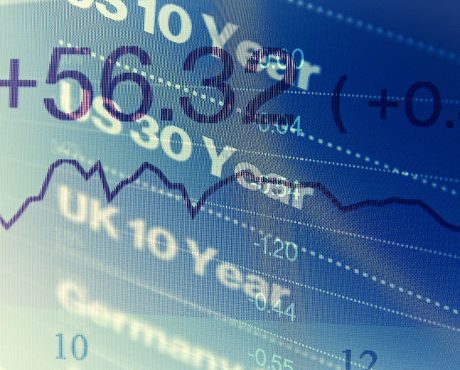Bond Yields Rise on Rate Hike Fears
Just one day after the Federal Reserve released details from its July meeting, bonds began to swing wildly. There was a rabid sell-off, but traders moved back into both 10- and two-year Treasuries by midday.
At 10:30 a.m., 10-year Treasury yields were up 88 basis points, but they soon dropped to 0.22% below the opening yield. Simultaneously, two-year Treasuries spiked 0.55% in the morning before plunging to -0.22%.
Investors were moving in tandem on the two different maturities.
The Fed’s ambiguous message had left investors uncertain about the future of interest rates. According to the minutes, some Fed governors want to raise interest rates soon, while others insist on waiting for a mass of new information. At least one of the governors was willing to raise interest rates immediately.
Needless to say, every line in the Fed’s minutes was dissected, but there was little to be gleaned. The internal discord created a smokescreen that makes future policy maneuvers hard to anticipate.
Investors originally anticipated a more hawkish position from the Fed, particularly in light of recent comments from two high-ranking officials.
William Dudley, president of the New York Fed, gave a speech on Tuesday where he said investors were being “complacent” about several rate hikes over “the next year or so.” (Source: “U.S. Stocks Fall With Bonds on Hawkish Fed Comments; Oil Climbs,” Bloomberg, August 15, 2016.)
On the very same day, his counterpart at the Atlanta Fed made similarly hawkish comments about interest rates, saying, “I’m not locked in to any policy position at this stage, but if my confidence in the economy proves to be justified, I think at least one increase of the policy rate could be appropriate later this year.” (Source: “Fed’s Lockhart Says At Least One Rate Hike May Be Needed in 2016,” Bloomberg, August 16, 2016.)
It looked as if the Fed was priming markets for an upcoming rate hike, but ambivalence in the minutes from the July meeting have cast a shadow over those assumptions.
Over the long term, investors will likely keep two-year and 10-year Treasury yields at an even distance, but in the short term, they can compress. The yield curve tends to flatten ahead of key Fed decisions, particularly when the possibility of a rate hike is involved.
